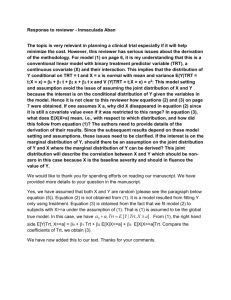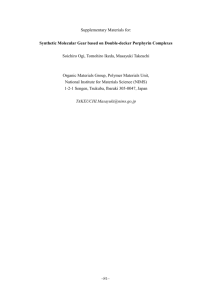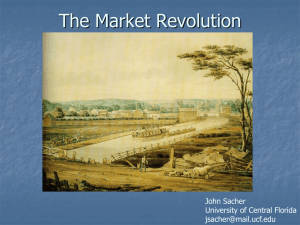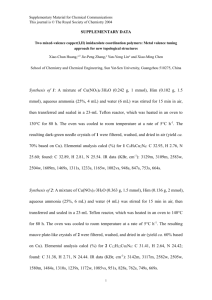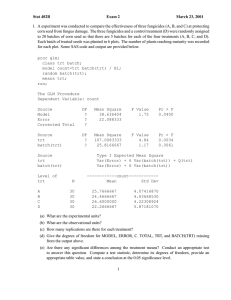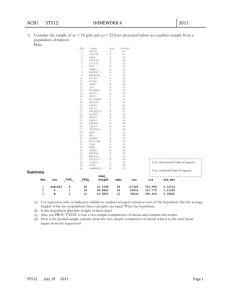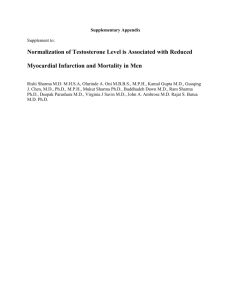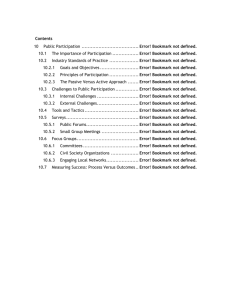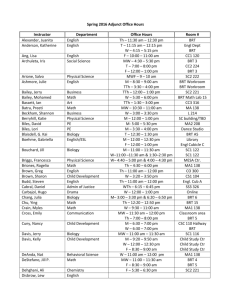Experimental details - Royal Society of Chemistry
advertisement
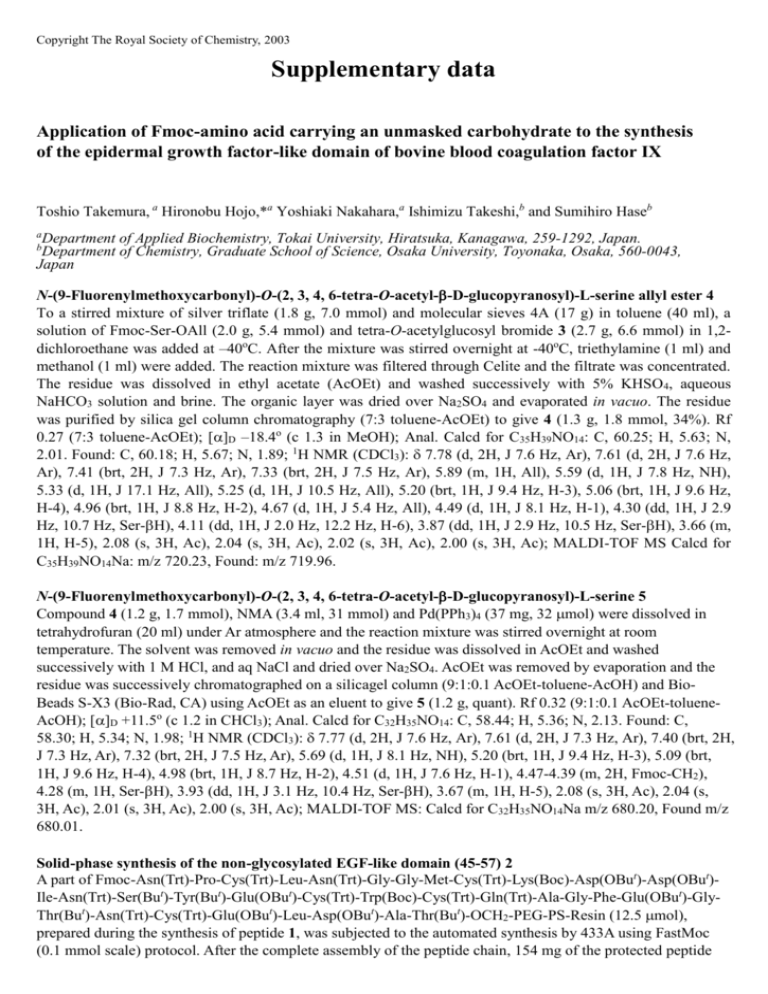
Copyright The Royal Society of Chemistry, 2003 Supplementary data Application of Fmoc-amino acid carrying an unmasked carbohydrate to the synthesis of the epidermal growth factor-like domain of bovine blood coagulation factor IX Toshio Takemura, a Hironobu Hojo,*a Yoshiaki Nakahara,a Ishimizu Takeshi,b and Sumihiro Haseb a Department b of Applied Biochemistry, Tokai University, Hiratsuka, Kanagawa, 259-1292, Japan. Department of Chemistry, Graduate School of Science, Osaka University, Toyonaka, Osaka, 560-0043, Japan N-(9-Fluorenylmethoxycarbonyl)-O-(2, 3, 4, 6-tetra-O-acetyl--D-glucopyranosyl)-L-serine allyl ester 4 To a stirred mixture of silver triflate (1.8 g, 7.0 mmol) and molecular sieves 4A (17 g) in toluene (40 ml), a solution of Fmoc-Ser-OAll (2.0 g, 5.4 mmol) and tetra-O-acetylglucosyl bromide 3 (2.7 g, 6.6 mmol) in 1,2dichloroethane was added at –40oC. After the mixture was stirred overnight at -40oC, triethylamine (1 ml) and methanol (1 ml) were added. The reaction mixture was filtered through Celite and the filtrate was concentrated. The residue was dissolved in ethyl acetate (AcOEt) and washed successively with 5% KHSO4, aqueous NaHCO3 solution and brine. The organic layer was dried over Na2SO4 and evaporated in vacuo. The residue was purified by silica gel column chromatography (7:3 toluene-AcOEt) to give 4 (1.3 g, 1.8 mmol, 34%). Rf 0.27 (7:3 toluene-AcOEt); []D –18.4o (c 1.3 in MeOH); Anal. Calcd for C35H39NO14: C, 60.25; H, 5.63; N, 2.01. Found: C, 60.18; H, 5.67; N, 1.89; 1H NMR (CDCl3): 7.78 (d, 2H, J 7.6 Hz, Ar), 7.61 (d, 2H, J 7.6 Hz, Ar), 7.41 (brt, 2H, J 7.3 Hz, Ar), 7.33 (brt, 2H, J 7.5 Hz, Ar), 5.89 (m, 1H, All), 5.59 (d, 1H, J 7.8 Hz, NH), 5.33 (d, 1H, J 17.1 Hz, All), 5.25 (d, 1H, J 10.5 Hz, All), 5.20 (brt, 1H, J 9.4 Hz, H-3), 5.06 (brt, 1H, J 9.6 Hz, H-4), 4.96 (brt, 1H, J 8.8 Hz, H-2), 4.67 (d, 1H, J 5.4 Hz, All), 4.49 (d, 1H, J 8.1 Hz, H-1), 4.30 (dd, 1H, J 2.9 Hz, 10.7 Hz, Ser-H), 4.11 (dd, 1H, J 2.0 Hz, 12.2 Hz, H-6), 3.87 (dd, 1H, J 2.9 Hz, 10.5 Hz, Ser-H), 3.66 (m, 1H, H-5), 2.08 (s, 3H, Ac), 2.04 (s, 3H, Ac), 2.02 (s, 3H, Ac), 2.00 (s, 3H, Ac); MALDI-TOF MS Calcd for C35H39NO14Na: m/z 720.23, Found: m/z 719.96. N-(9-Fluorenylmethoxycarbonyl)-O-(2, 3, 4, 6-tetra-O-acetyl--D-glucopyranosyl)-L-serine 5 Compound 4 (1.2 g, 1.7 mmol), NMA (3.4 ml, 31 mmol) and Pd(PPh3)4 (37 mg, 32 mol) were dissolved in tetrahydrofuran (20 ml) under Ar atmosphere and the reaction mixture was stirred overnight at room temperature. The solvent was removed in vacuo and the residue was dissolved in AcOEt and washed successively with 1 M HCl, and aq NaCl and dried over Na2SO4. AcOEt was removed by evaporation and the residue was successively chromatographed on a silicagel column (9:1:0.1 AcOEt-toluene-AcOH) and BioBeads S-X3 (Bio-Rad, CA) using AcOEt as an eluent to give 5 (1.2 g, quant). Rf 0.32 (9:1:0.1 AcOEt-tolueneAcOH); []D +11.5o (c 1.2 in CHCl3); Anal. Calcd for C32H35NO14: C, 58.44; H, 5.36; N, 2.13. Found: C, 58.30; H, 5.34; N, 1.98; 1H NMR (CDCl3): 7.77 (d, 2H, J 7.6 Hz, Ar), 7.61 (d, 2H, J 7.3 Hz, Ar), 7.40 (brt, 2H, J 7.3 Hz, Ar), 7.32 (brt, 2H, J 7.5 Hz, Ar), 5.69 (d, 1H, J 8.1 Hz, NH), 5.20 (brt, 1H, J 9.4 Hz, H-3), 5.09 (brt, 1H, J 9.6 Hz, H-4), 4.98 (brt, 1H, J 8.7 Hz, H-2), 4.51 (d, 1H, J 7.6 Hz, H-1), 4.47-4.39 (m, 2H, Fmoc-CH2), 4.28 (m, 1H, Ser-H), 3.93 (dd, 1H, J 3.1 Hz, 10.4 Hz, Ser-H), 3.67 (m, 1H, H-5), 2.08 (s, 3H, Ac), 2.04 (s, 3H, Ac), 2.01 (s, 3H, Ac), 2.00 (s, 3H, Ac); MALDI-TOF MS: Calcd for C32H35NO14Na m/z 680.20, Found m/z 680.01. Solid-phase synthesis of the non-glycosylated EGF-like domain (45-57) 2 A part of Fmoc-Asn(Trt)-Pro-Cys(Trt)-Leu-Asn(Trt)-Gly-Gly-Met-Cys(Trt)-Lys(Boc)-Asp(OBut)-Asp(OBut)Ile-Asn(Trt)-Ser(But)-Tyr(But)-Glu(OBut)-Cys(Trt)-Trp(Boc)-Cys(Trt)-Gln(Trt)-Ala-Gly-Phe-Glu(OBut)-GlyThr(But)-Asn(Trt)-Cys(Trt)-Glu(OBut)-Leu-Asp(OBut)-Ala-Thr(But)-OCH2-PEG-PS-Resin (12.5 mol), prepared during the synthesis of peptide 1, was subjected to the automated synthesis by 433A using FastMoc (0.1 mmol scale) protocol. After the complete assembly of the peptide chain, 154 mg of the protected peptide Copyright The Royal Society of Chemistry, 2003 resin was obtained. A part of the res TFA was removed by nitrogen stream and the ether was added to form a precipitate, which was washed twice with ether and dried in vacuo. The peptide was extracted by 50% aqueous acetonitrile containing 0.1% TFA (2 ml) and filtered through a membrane filter. The solution was dropped into 0.1 M ammonium acetate (50 ml, pH 8.0) containing oxidized (3 mg) and reduced form of glutathione (15 mg) and stirred 3 days at room temperature. The solution was acidified by acetic acid and loaded on RPHPLC column. The main fraction was collected and lyophilized to give the desired peptide 2. The yield was 140 nmol (3.7% based on the Thr content on the starting resin). MADLI-TOF MS Found: m/z 4692.2 (M+H)+. Calcd: m/z 4691.7 (M+H)+; Amino acid analysis; Asp9.27Thr1.88Ser1.71Glu5.84Pro1.42Gly5Ala2.11Cys1.82 Val0.81Met1.00Ile1.01Leu2.09 Tyr1.90Phe1.02Lys1.02.
